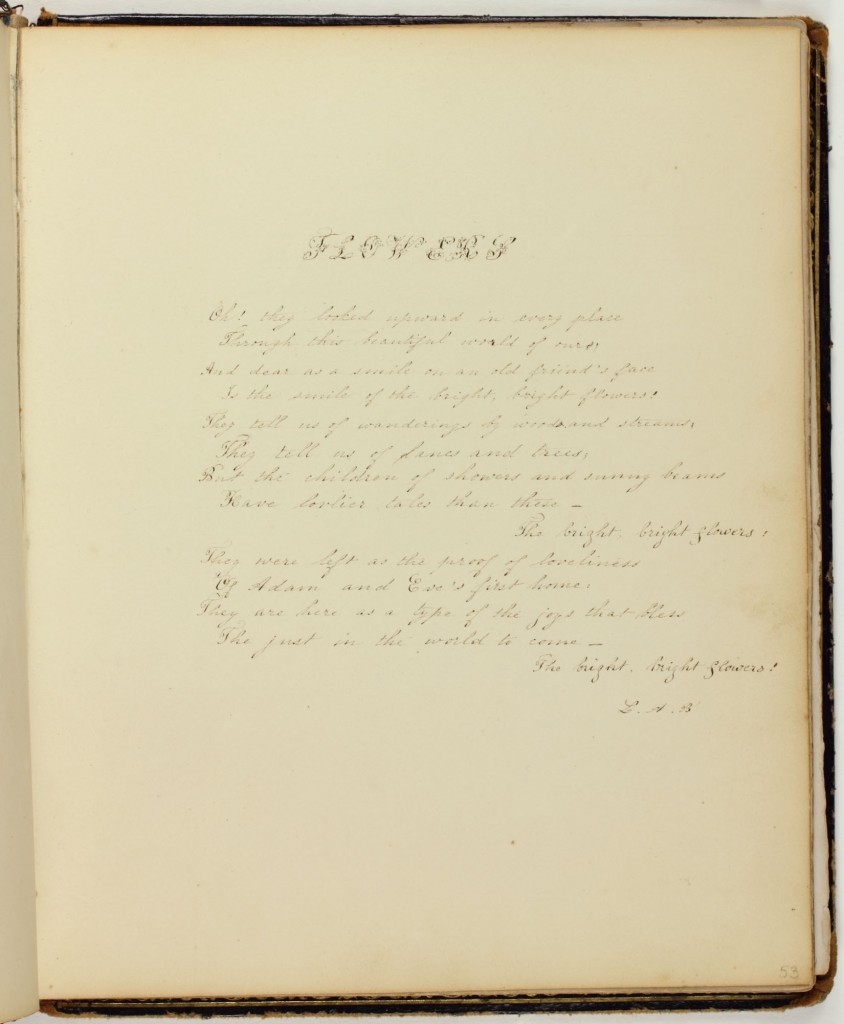Preface (3)
6|7|8|9|10|11-12|13|14|15|16|17|18|19|20|21|22|23|24|25|26|28|30|31|32|33
34|35|36|39|42|44|47|49|51|52|53|54|55|56|57|59|62| 63|64-68|70|73|75
 FLOWERS
FLOWERS
Oh! they looked upward in every place
Through this beautiful world of ours,
And dear as a smile on an old friend’s face
Is the smile of the bright, bright flowers!
They tell us of wanderings by woods and streams;
They tell us of lanes and trees;
But the children of showers and sunny beams
Have lovlier [sic] tales than these—
The bright, bright flowers!
They were left as the proof of loveliness
Of Adam and Eve’s first home:
They are here as a type of the joys that bless
The just in the world to come—
The bright, bright flowers!
L. A. B
This original poem “Flowers” by probably Lydia A. Bustill features embellished language and the enthusiastic repetition of “bright, bright flowers!” The poem contains conflicting themes of flux and stasis, and impermanence and eternity. Flowers are connected to the mobility of streams as well as the immobility of trees, and connote both ephemerality and the origins of the earth. “Look[ing] upward in every place” and acting as proof of “Adam and Eve’s first home,” flowers also symbolize the connection between the individual and God. The poem’s tone is optimistic, after the “showers,” the flowers will become bright and lovely, and there is a promise of “just[ice] in the world to come.”
Page 53: Selection from The Poetry of Flowers and Flowers of Poetry (New York: R. C. Ricker, 1841), 244.
